
Lydia Gibson (1891-1964) was an American socialist illustrator who contributed work to The Masses, The Liberator, The Workers' Monthly, New Masses, and other radical publications.

Lydia Gibson (1891-1964) was an American socialist illustrator who contributed work to The Masses, The Liberator, The Workers' Monthly, New Masses, and other radical publications.
Lydia Gibson was born in 1891, one of three daughters of English-born architect Robert W. Gibson and his wife Caroline Gibson, née Hammond. She grew up in prosperity but seems to have been radicalized in her 20s during the movement for women's suffrage, in which she was an activist. [1] In the latter half of the 1910s, she began contributing her work to The Masses, a literary and artistic magazine with a distinct socialist orientation, published by Max Eastman and his sister Crystal in New York City.
In conjunction with her work with The Masses, Gibson met and worked with many other prominent political artists of the day, including Boardman Robinson, Art Young, Hugo Gellert, and Robert Minor. The anarchist Texan Minor fell in love with Gibson, but she initially declined the advances of the political cartoonist, whom she believed to still have been married. [2]
After the Bolshevik Revolution of November 1917, Minor traveled to Soviet Russia, where he became committed to the communist cause and subsequently foreswore his anarchist beliefs and joined the underground Communist Party of America. In August 1920 Gibson also "changed her mind a little," this over matters of the heart and wrote to Robert Minor, then amorously involved and living with radical journalist Mary Heaton Vorse. Gibson signaled her intentions to Minor and eventually won his returned affection after the two had worked together in the offices of The Liberator in 1922. [3] The two married in 1923. [4]
In 1927, while in Moscow with her husband, who was the delegate of the American Communist Party to the Executive Committee of the Communist International, Gibson assisted "Big Bill" Haywood with the preparation of the first part of his memoirs. [5] Gibson had to leave the Soviet Union before the project was completed, however, and another individual who was a former member of the Industrial Workers of the World, as was Haywood, helped complete the work. [5] Haywood's autobiography was published posthumously in 1929.
In 1934, Gibson wrote and illustrated a children's book, The Teacup Whale, a tale which, while not explicitly radical, invited children to dream big dreams and to challenge the contrary opinions of doubters. [4]
Gibson and Minor remained together until the latter's death of a heart attack in 1952.
Lydia Gibson remained loyal to the Communist Party even after the revelations of Nikita Khrushchev in 1956. In 1962 she loaned the party $5,000 in US Treasury Bonds to bail out CPUSA General Secretary Gus Hall from jail. [6]
Lydia Gibson died in 1964.
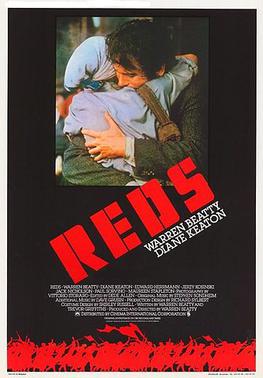
Reds is a 1981 American epic historical drama film, co-written, produced, and directed by Warren Beatty, about the life and career of John Reed, the journalist and writer who chronicled the October Revolution in Russia in his 1919 book Ten Days That Shook the World. Beatty stars in the lead role alongside Diane Keaton as Louise Bryant and Jack Nicholson as Eugene O'Neill.

William Dudley Haywood, nicknamed "Big Bill", was an American labor organizer and founding member and leader of the Industrial Workers of the World (IWW) and a member of the executive committee of the Socialist Party of America. During the first two decades of the 20th century, Haywood was involved in several important labor battles, including the Colorado Labor Wars, the Lawrence Textile Strike, and other textile strikes in Massachusetts and New Jersey.
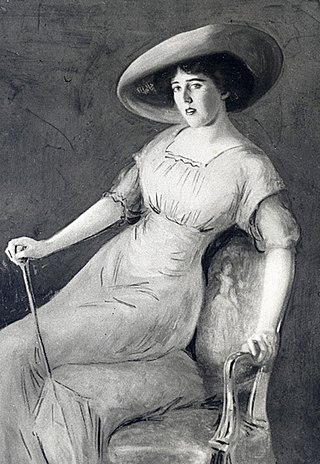
Louise Bryant was an American feminist, political activist, and journalist best known for her sympathetic coverage of Russia and the Bolsheviks during the Russian Revolution of November 1917.

Elizabeth Gurley Flynn was an American labor leader, activist, and feminist who played a leading role in the Industrial Workers of the World (IWW). Flynn was a founding member of the American Civil Liberties Union and a visible proponent of women's rights, birth control, and women's suffrage. She joined the Communist Party USA in 1936 and late in life, in 1961, became its chairwoman. She died during a visit to the Soviet Union, where she was accorded a state funeral with processions in Red Square attended by over 25,000 people.

New Masses (1926–1948) was an American Marxist magazine closely associated with the Communist Party USA. It succeeded both The Masses (1912–1917) and The Liberator (1918–1924). New Masses was later merged into Masses & Mainstream (1948–1963). With the coming of the Great Depression in 1929 America became more receptive to ideas from the political Left and New Masses became highly influential in intellectual circles. The magazine has been called “the principal organ of the American cultural left from 1926 onwards."
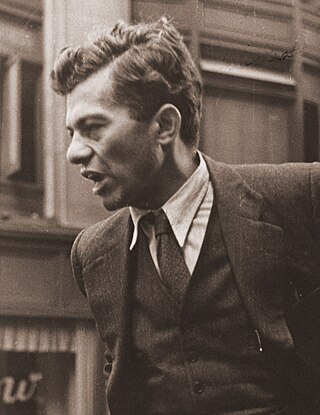
Michael Gold was the pen-name of Jewish American writer Itzok Isaac Granich. A lifelong communist, Gold was a novelist and literary critic. His semi-autobiographical novel Jews without Money (1930) was a bestseller. During the 1930s and 1940s, Gold was considered the preeminent author and editor of U.S. proletarian literature.
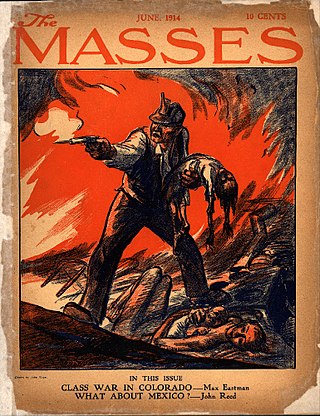
The Masses was a graphically innovative American magazine of socialist politics published monthly from 1911 until 1917, when federal prosecutors brought charges against its editors for conspiring to obstruct conscription in the United States during World War I. It was succeeded by The Liberator and then later New Masses. It published reportage, fiction, poetry and art by the leading radicals of the time such as Max Eastman, John Reed, Dorothy Day, and Floyd Dell.

Harry Haywood was an American political activist who was a leading figure in both the Communist Party of the United States (CPUSA) and the Communist Party of the Soviet Union (CPSU). His goal was to connect the political philosophy of the Communist Party with the issues of race.

Robert Berkeley "Bob" Minor, alternatively known as "Fighting Bob", was a political cartoonist, a radical journalist, and, beginning in 1920, a leading member of the Communist Party USA.
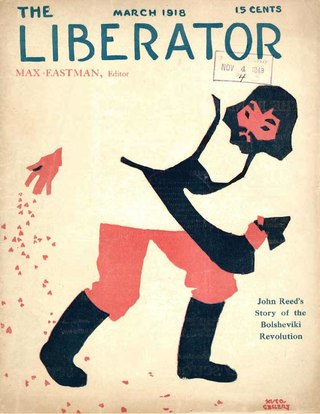
The Liberator was a monthly socialist magazine established by Max Eastman and his sister Crystal Eastman in 1918 to continue the work of The Masses, which was shut down by the wartime mailing regulations of the U.S. government. Intensely political, the magazine included copious quantities of art, poetry, and fiction along with political reporting and commentary. The publication was an organ of the Communist Party of America (CPA) from late 1922 and was merged with two other publications to form The Workers Monthly in 1924.

William Gropper was an American cartoonist, painter, lithographer, and muralist. A committed radical, Gropper is best known for the political work which he contributed to such left wing publications as The Revolutionary Age,The Liberator,The New Masses,The Worker, and Morgen Freiheit.

The Blast was a semi-monthly anarchist periodical published by Alexander Berkman in San Francisco, California, USA from 1916 through 1917. The publication had roots in Emma Goldman's magazine Mother Earth, having been launched when her former consort Berkman left his editorial position at that publication.

Mary Heaton Vorse was an American journalist and novelist. She established her reputation as a journalist reporting the labor protests of a largely female and immigrant workforce in the east-coast textile industry. Her later fiction drew on this material profiling the social and domestic struggles of working women. Unwilling to be a disinterested observer, she participated in labor and civil protests and was for a period the subject of regular U.S. Justice Department surveillance.
Maurice Becker was a radical political artist best known for his work in the 1910s and 1920s for such publications as The Masses and The Liberator.
Lois Gould was an American writer, known for her novels and other works about women's lives.
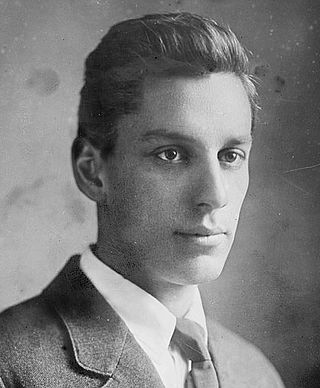
Max Forrester Eastman was an American writer on literature, philosophy and society, a poet and a prominent political activist. Moving to New York City for graduate school, Eastman became involved with radical circles in Greenwich Village. He supported socialism and became a leading patron of the Harlem Renaissance and an activist for a number of liberal and radical causes. For several years, he edited The Masses. With his sister Crystal Eastman, he co-founded in 1917 The Liberator, a radical magazine of politics and the arts.
Edith Segal was a Jewish-American choreographer, dancer, poet and songwriter.
The International Labor Defense (ILD) (1925–1947) was a legal advocacy organization established in 1925 in the United States as the American section of the Comintern's International Red Aid network. The ILD defended Sacco and Vanzetti, was active in the anti-lynching, movements for civil rights, and prominently participated in the defense and legal appeals in the cause célèbre of the Scottsboro Boys in the early 1930s. Its work contributed to the appeal of the Communist Party among African Americans in the South. In addition to fundraising for defense and assisting in defense strategies, from January 1926 it published Labor Defender, a monthly illustrated magazine that achieved wide circulation. In 1946 the ILD was merged with the National Federation for Constitutional Liberties to form the Civil Rights Congress, which served as the new legal defense organization of the Communist Party USA. It intended to expand its appeal, especially to African Americans in the South. In several prominent cases in which blacks had been sentenced to death in the South, the CRC campaigned on behalf of black defendants. It had some conflict with former allies, such as the NAACP, and became increasingly isolated. Because of federal government pressure against organizations it considered subversive, such as the CRC, it became less useful in representing defendants in criminal justice cases. The CRC was dissolved in 1956. At the same time, in this period, black leaders were expanding the activities and reach of the Civil Rights Movement. In 1954, in a case managed by the NAACP, the US Supreme Court ruled in Brown v. Board of Education that segregation of public schools was unconstitutional.

Ida Rauh was an American suffragist, actress, sculptor, and poet who helped found the Provincetown Players in 1915. The players, including Susan Glaspell, George Cram Cook, John Reed, Hutchins Hapgood, Eugene O'Neill, and others, first performed in a structure owned by Mary Heaton Vorse in Provincetown, Massachusetts. Later, the group moved to a theater on MacDougal Street in Greenwich Village. Rauh directed the first production of O'Neill's one-act play Where the Cross Is Made for the opening of the permanent Provincetown Playhouse at 133 Macdougal Street in November 1918, and in the Village she became known for her intensely emotional acting.
Dorothy Markey, known by the pen name Myra Page, was a 20th-century American communist writer, journalist, union activist, and teacher.